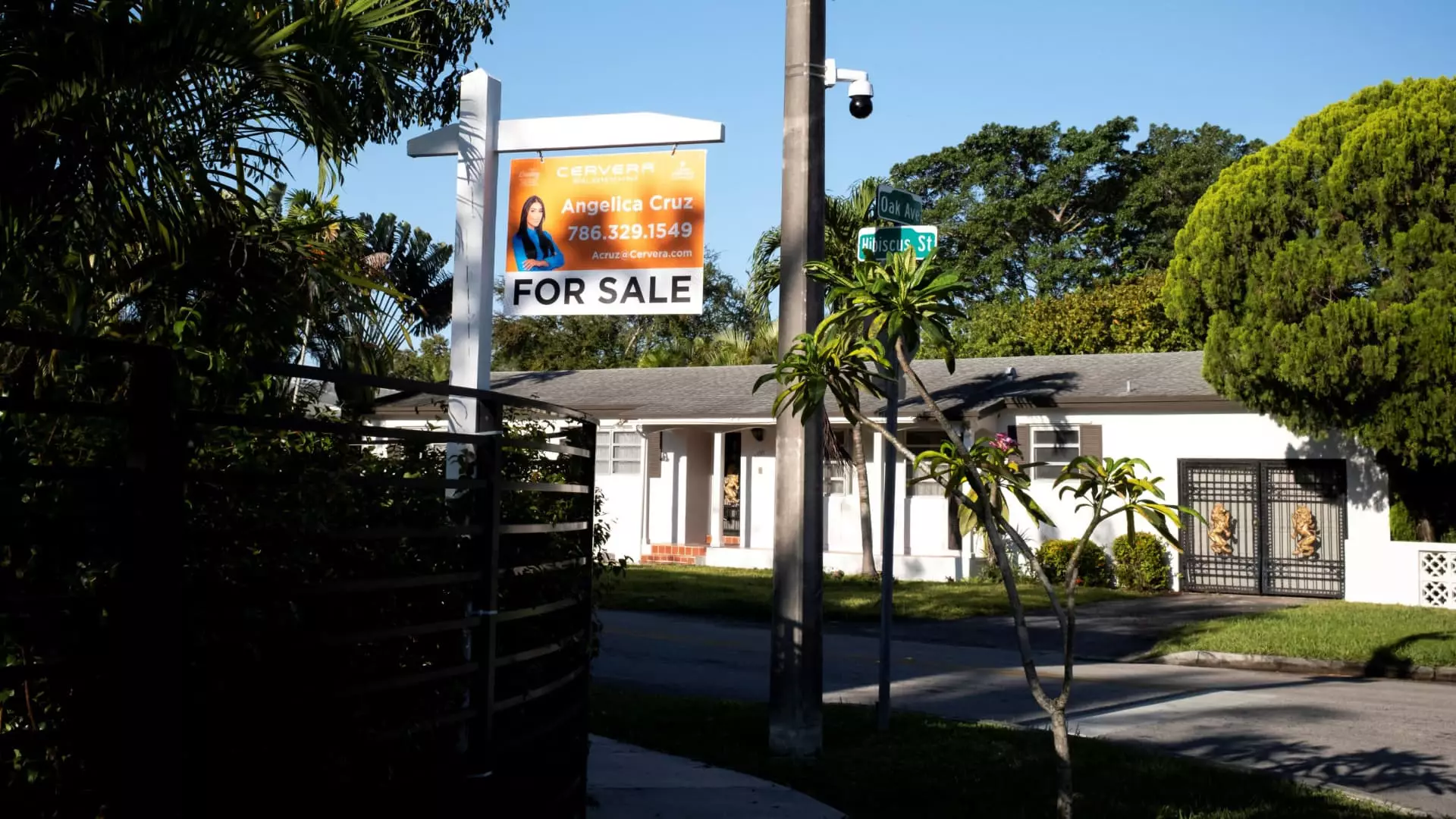It’s no secret that the state of today’s housing market is significantly impacted by soaring mortgage rates and an all-encompassing anxiety regarding economic conditions. The decline in sales data for March paints a bleak picture of a sector usually characterized by its vibrancy during the spring season. A staggering 5.9% drop in sales of previously owned homes compared to February, resulting in an annualized rate of only 4.02 million units, sends shockwaves through the real estate community. When considering that this is the most sluggish March performance since 2009, it begs the question: what is the underlying cause of this distress? The answer clearly lies in a combination of elevated mortgage rates and a general trepidation about the broader economic climate.
Such a decline should raise alarm bells for policymakers and lenders alike. Home buying represents and often reflects the economic mobility of society as a whole. If consumers feel strapped by high mortgage rates—which hovered above 7% through much of the winter months—there’s an inherent risk of stagnation in social progress and wealth accumulation. This precarious situation presents a challenge not just for the housing market, but echoes larger concerns regarding financial stability among average households.
Regional Disparities: The Uneven Playing Field
When reviewing the sales trends across various regions, it becomes evident that the West is grappling with an especially steep decline, depicted by a staggering 9% drop month-over-month. Arguably the most expensive area in the United States, the West still recorded a year-over-year uptick, thanks to robust job growth in certain states. However, this regional disparity presents a convoluted narrative where economic fortunes are not evenly distributed, further complicating the housing landscape.
The fact that the other regions are also reporting declines is a more troubling signal. It indicates a nationwide malaise that transcends localized conditions or trends. While the Rocky Mountain states manage to maintain buoyancy through job growth, the broader picture remains bleak. Regulatory efforts to promote affordable housing are essential to counterbalance this worrying trend—without active intervention, many potential buyers will remain on the sidelines, unable to secure the financing they need.
The Implications of Increased Inventory
One might assume that an increase of 20% in available listings would serve to invigorate the market. However, that notion is misguided when one considers the current sales pace. An equivalent of a mere four-month supply indicates a market still teetering on the edges of imbalance. Experts suggest that a six-month supply is the equilibrium point, where buyers and sellers can negotiate from positions of comparative strength. The increasing inventory is not stimulating sales; rather, it signals mounting consumer skepticism and lowered interest in committing to purchases in this dismal economic climate.
It is a daunting paradox—more inventory, and fewer sales. Home prices are now beginning to experience downward pressure as buyer reluctance becomes evident. Even the median price of existing homes, while still high at $403,700, is only inching upward by a mere 2.7% from last year. With each passing month revealing a dwindling pace of price appreciation, sellers must confront the uncomfortable reality that the marketplace is shifting beneath their feet.
The Role of First-Time Buyers
The ongoing decline in first-time homebuyer representation, now at 32% compared to a historical average of around 40%, underscores a significant barrier for entry into the housing market. This demographic is often the lifeblood of the real estate ecosystem as they stimulate demand and drive the need for more inventory. Fewer first-time buyers inevitably lead to a slowdown in home sales and can contribute to a broader economic stagnation.
Moreover, the slight drop in all-cash sales—falling to 26% from 28% a year earlier—indicates a shift in investor behavior in response to broader economic fears. If investors begin to pull back, it suggests that they too are feeling the pinch of uncertainty, further constricting liquidity in the market.
In light of increasing canceled contracts and the troubling forecast for upcoming months, it appears that the housing market is facing significant headwinds that could take years to overcome if current trends continue. The urgency for reforms is palpable; economically, the stakes couldn’t be higher. Without concerted efforts to address these systemic issues, the challenges could deepen, leading to more severe ramifications for society as a whole.

